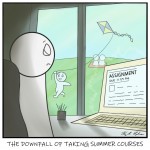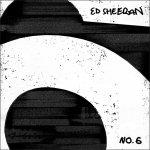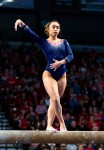The Cult of the Dead Cow collective started in Texas in 1984.
Although its title sounds like a fitting name for a slaughterhouse, the group actually specialized in online hacking, said journalist Joseph Menn.
Menn investigated the history and mission of the multidecade hacking group in his new book, “Cult of the Dead Cow: How the Original Hacking Supergroup Might Just Save the World.” The Hammer Museum hosted a conversation to discuss the book Wednesday, featuring Menn and documentarian Brian Knappenberger, who made the film “We Are Legion: The Story of the Hactivists” about the international hackers Anonymous.
The conversation touched upon Cult of the Dead Cow’s social impact, but Menn particularly emphasized the very human narrative his book follows. Its plot consensually outed several of the group’s founding members to reveal an ensemble cast of oddball teenagers who went on to make a difference in protecting the consumer from tech companies, he said.
“In the very beginning, the unifying characteristic was that these were people who were going to extraordinary lengths to connect with their peers,” Menn said. “These guys are the liberal arts wing of the hacker underground and that is one of the reasons that they survived.”
[RELATED: Experimental works invite interaction, comment on sociopolitical systems]
Members of Cult of the Dead Cow started by reaching out to one another through bulletin boards and by sending text files back and forth, Menn said, often connecting to discuss music or make satirical content. Over time, however, they joined forces with L0pht, a more technologically focused hacking group. Cult of the Dead Cow eventually developed its own conference called HoHoCon and began exploring deeper topics, such as a widely publicized stunt in which they exposed flaws in Microsoft’s security, he said.
Menn, who has been covering cybersecurity for 20 years, said that while his previous book, “Fatal System Error: The Hunt for the New Crime Lords Who Are Bringing Down the Internet,” had clear cut “good” investigative characters and “bad” criminals, it was far more challenging to weave a narrative about a diverse collective of hackers. His research into the group spanned three years, and he said the best way to trace the growth of Cult of the Dead Cow’s goals was through introducing characters, such as founder “Swamp Ratte,” at pivotal points.
“The group evolved multiple times,” Menn said. “In the beginning, these teenagers in Texas worked on the underground newspapers of the day (through dial-up bulletin boards), and for a variety of reasons, they ended up surviving into the web era. … I identified the core people involved in the leaps when the plot called for it.”
In addition to the chronological perspective, Menn said the book contains chapters on events related to the development of “hacktivism,” a now-common term coined by Cult of the Dead Cow itself. Hacktivism, Knappenberger said, is defined as using electronic systems or connected networks in order to make a political point. This involves “white hat” hacking, in which hackers like those in Cult of the Dead Cow expose companies’ security flaws and ultimately create a better world for the consumer, he said.
“Over their evolution, the Cult of the Dead Cow began to realize that what they’re fighting for is the user and when that mission was broadened in some people’s minds, it became about civil liberties online,” Knappenberger said. “It’s about rights of people not to be surveilled by their government. This is a movement.”
In the conversation, Knappenberger questioned Menn about his book’s intentions. The journalist said he wanted to take a positive perspective on the issues of cybersecurity. His intention was not to harp on criminal aspects of hacker groups, he said, but to highlight the achievements of hacktivists who have made a difference through their ingenuity and their willingness to push boundaries for the public good.
“Hackers are critical thinkers and critical thinking is at an all time low (currently). … I want to hold people up who have done important, helpful work to society by thinking hard and getting out of their depth at times,” Menn said.
[RELATED: Author examines shades of grief, aftermath of tragedy in new book at Hammer Museum]
The conversation concluded with a question and answer portion that led to discussion regarding Julian Assange’s WikiLeaks story, as well as revelations about where previous group members have ended up today. Former member and attendee Adam O’Donnell spoke up during the Q&A to provide context. Attendees were even surprised by the fact Democratic presidential candidate Beto O’Rourke was a member of the hacktivist group in his youth under the pseudonym “Psychedelic Warlord.” Knappenberger reiterated how Cult of the Dead Cow, whose founders are now in various fields, sparked in-depth conversations about online security far before anyone else.
“This group that has always been on this balance between chaos and the most important discussions you can have in the modern age,” Knappenberger said.
Lili Raygoza, a graduate student in world arts and cultures/dance, said she just began reading Menn’s book and attended the event as a student interested in how technology influences education. Hacktivism in particular could empower younger people to explore the inequalities that are emerging from the internet and the broad influence of tech companies, she said.
“(We should be) thinking about (technology) critically … as we did the question portion of this discussion, thinking of the shortcomings and the biases encoded in these algorithms,” Raygoza said. “I was interested to learn more about how hacktivists are combating that and resisting those types of structural issues.”
Graduate student Menelik Tafari asked a question about the controversial “doxing” process employed by hackers, which involves publishing others’ private information with malicious intent. Public interest in hacktivism groups such as Cult of the Dead Cow will only increase as users become more aware of their own reliance on technology, he said.
“They planned things out, they developed an actual strategy and their tactics reinforced it,” Tafari said. “We’re invariably going to have to talk about what tactics should we take as citizens in order to make sure we’re getting a fair shake in our society.”






